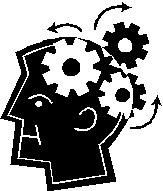

 d
d
Self-Mutilation
There are many different forms of self-mutilation. Some of the most common include: cutting, burning and hair-pulling. There are several reasons for this destructive behavior: family problems, sexual abuse, social anxiety, failure, and low levels of serotonin. Like anorexia nervosa and bulimia nervosa it usually begins during the adolescence.
Eating Disorders
Bulimia Nervosa and Anorexia Nervosa are both extreme eating disorders common among young women. There are diverse components that cause the beginning of these addictions: media, emotions, perfection, and surrounding environment. Psychology plays a large role in the development of these disorders much like self-mutilation, low levels of the neurotransmitter serotonin cause depression, irritability, and anxiousness.
Emotions
The driving force behind each of these issues is a human being's capacity to feel a certain way. With the eating disorder and self mutilation the emotions that feed an individual's psyche causing someone to believe that they have to meet a certain standard, or that they need to feel a certain way, contain a direct causal relationship with the actions causing harm. Sexual orientation can also be attributed to emotion, although it is in a much more generalized sense. Our attraction to any other human being is usually generated by some type of feeling. Each of the issues dealt with is tied closely to the individual's ability to feel these emotions.
Connection with The Ideal
Mental States and Perfection is connected with The Ideal in many fashions.
1. Our strive is The Ideal
2. Each topic maintains an original path to reach perfection
3. The Ideal is never reached in any of these topics or any topic; it is impossible to reach
4. The Ideal includes an individual improving their physical, emotional, spiritual, and mental states. Each of these topics reflect on one or more conditions of "improvement" listed above.
Our group represents the actions and outcomes of the final goal of The Ideal.
Team Presentation
As a team, we decided to present our information with individual, unique lectures. We each tended to steer towards the psychological aspect in order for each student to understand the "emotions" behind each topic. Our entire team was centered around Mike Seufert's Emotions presentation, as you can see as the four topics all attach to the central topic of emotions. For eating disorders and self-mutilation, emotions are the central drive of acceptance: with yourself, family, friends, and society. Sexuality and Suffering tie in with emotions by understanding that our feelings are shaped by society emotionally and physically. A copy of our power point/presentation is included on our individual sites.
Suffering
An in-depth examination of numerous philosophical approaches to the problem of suffering, specifically in the context of physical pain. The philosophies are presented in a historical perspective, starting with the pre-Socratics and ending with contemporary philosophies, such as Objectivism. An emphasis is placed upon how the philosophies relate the problem of suffering to choosing between happiness and pain and the choices made in a person's life. Additionally, the scientific explanation of pain is discussed.
Sexuality
Sexuality and sexual orientation make up a large part of an individual's personal identity. This page will explore historical understandings of sexual orientation, current controversies surrounding the topic, scientific theorizing about sexual orientation, and the role that sexuality plays in individual lives as well as society at large.
"This site was created for an honors course at Monmouth College by students."